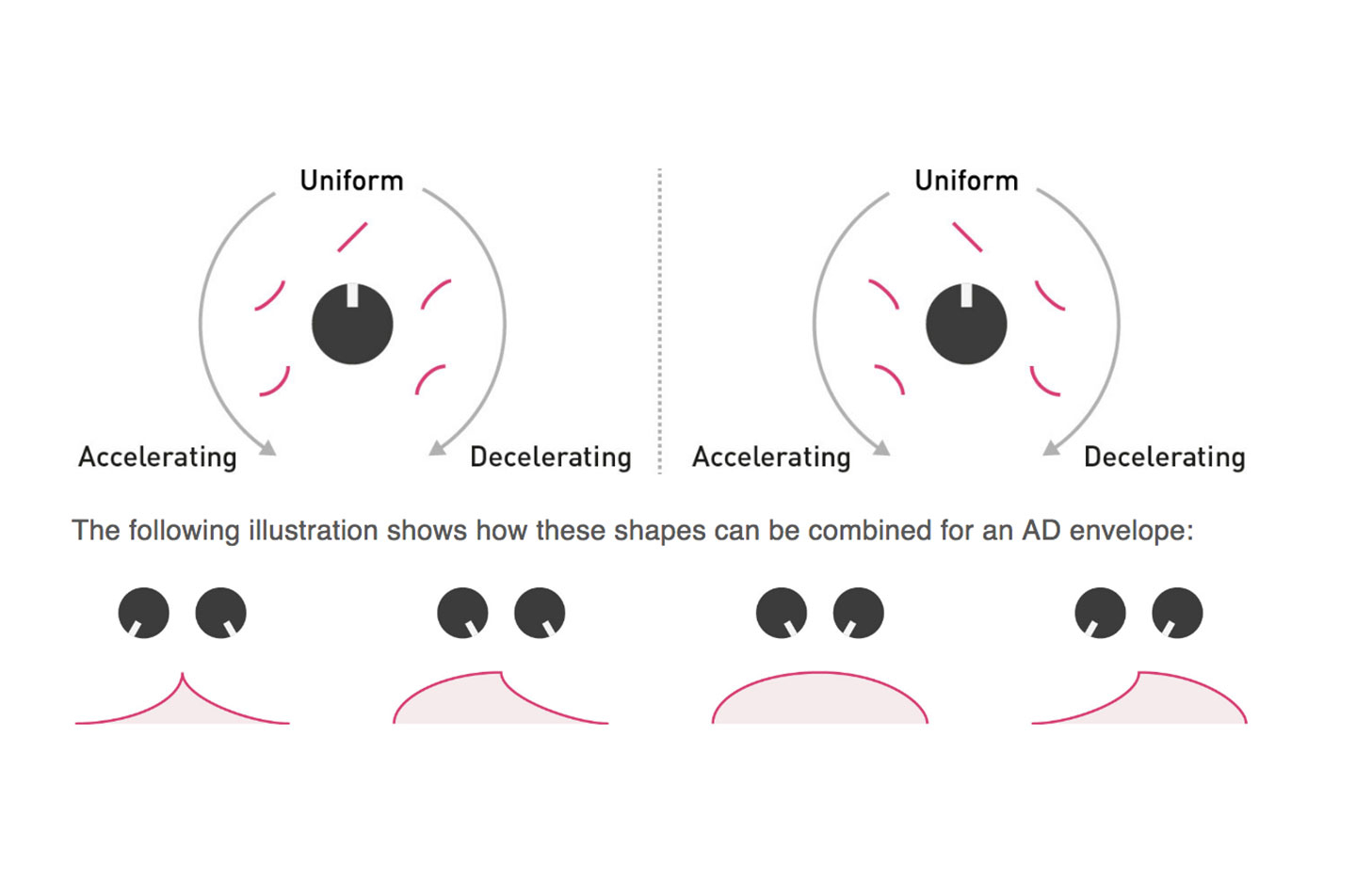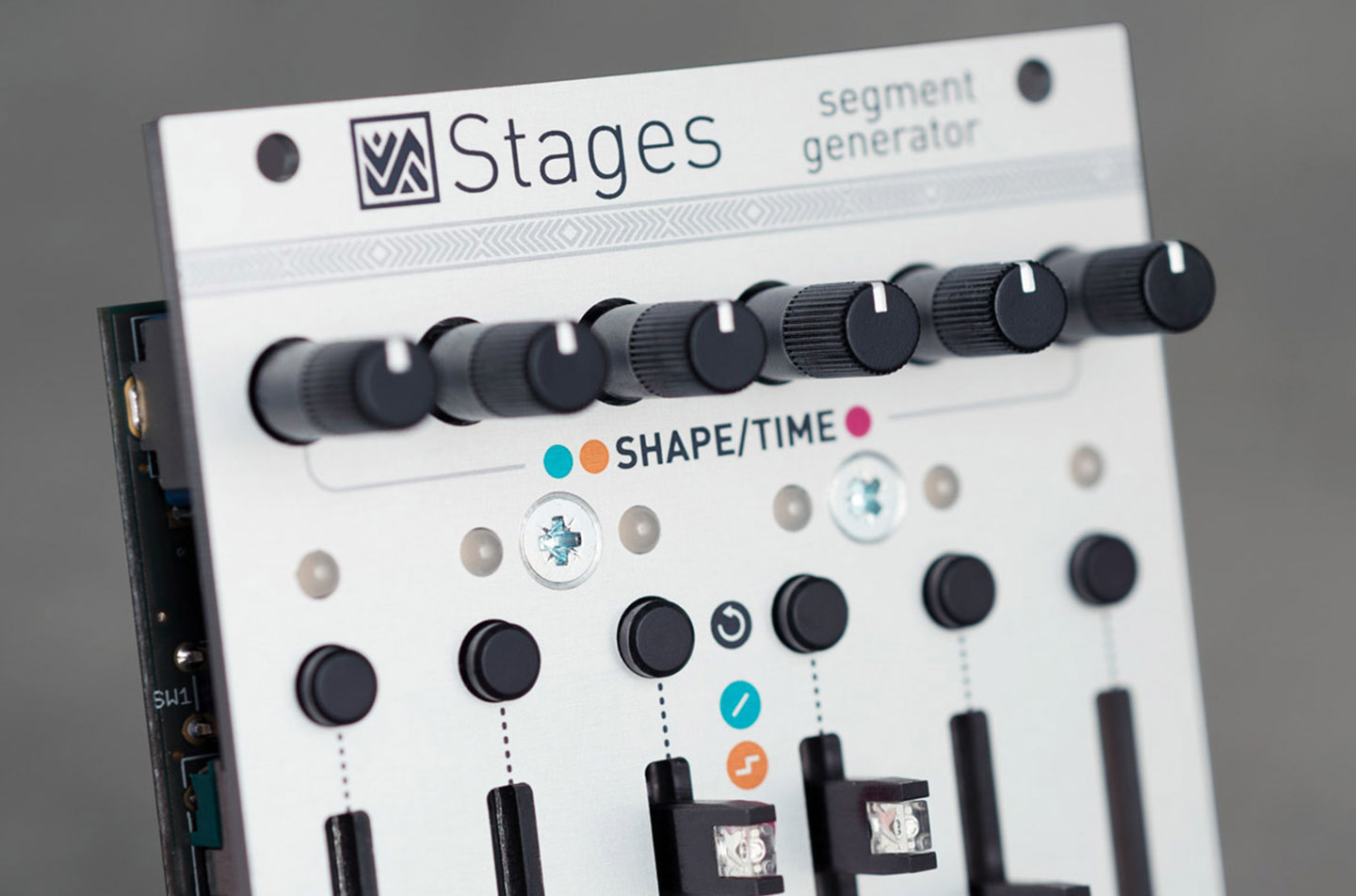- Olivier Gillet turns out another future classic.
- When Stages was announced back in April, I had a hard time explaining what it does. Émilie Gillet, the much-loved and highly-respected brains behind Mutable Instruments, dubbed it a "segment generator." This is a totally accurate description but you could be forgiven for wondering exactly what it means in practice. Stages seemed to be something of a Swiss Army knife, capable of generating a huge array of very specific envelopes, modulation, switches and even short sequences. Depending on how you set up a patch, it could be all these things at once, and each of the six sliders can be set to a different state, changing its behaviour and how it relates to its neighbouring segments. It's an extremely modular module that's open to interpretation. I'm happy to say that, having now used the thing for a month or so, it's a lot more intuitive and useable than the jargon might indicate.
Stages can be an immensely useful addition to your rack. Yet on first inspection, it can't help but be caught in the shadow of Gillet's recently released Marbles and Plaits modules, two devices whose wow factor is more obvious than the muted, obscure Stages. However, as is so often the case with Eurorack, it's usually in your best interest to look away from the bright lights and think about how a module like Stages will unlock new possibilities in the rack you already have.
So Stages is something of the dark horse in Gillet's new run of modules. Much to his credit, he's discontinuing a whole slew of devices, some of which are not only his most popular items, but some of the most popular products in the entire Eurorack marketplace. Nevertheless, Gillet's design sensibility has evolved. Gone are the multiple modes and hidden features. Modules like Clouds have a huge sound palette, but users often ending up making similar sounds (this says more about the users than Gillet's work, however). Part of the remedy involves matching the state of the parameters on the faceplate to a module's current function. So while the multiple modes and patching possibilities of Stages initially had me hesitant, it's actually a very logical module in use.
This isn't to say that Stages doesn't have quirks. But once you look into why things are the way they are, they're always grounded in solid, often musical reasoning. For instance, the Shape knobs at the top of each segment provide different curve shapes depending on whether they're set as attack or decay envelopes. Set all the way to the right, you'll get an exponential rise on the attack but a logarithmic fall on the decay. The apparent inconsistency can be confusing at first, but as YouTube's eminent fount of modular wisdom DivKid has pointed out, exponential decays are a natural pairing for logarithmic rises, making this a musically sound design choice.
In my case, I bought Stages because I needed as many basic envelopes and LFOs as possible in the smallest possible space. On that front, Stages is a no-brainer. At 14HP, you'd struggle to find this much power elsewhere in such a small size, yet the interface isn't overly busy or cramped. The envelopes alone are as advanced as a fully-featured, dedicated envelope module. You have voltage control over the length of all six stages, which can be patched to create anything from simple decays to an AHDSR or bizarre shapes such as an AD1D2SR1R2. The Shape/Time knobs allow you to dial in their shapes, again, for every stage. Some envelopes force one curve shape over all stages. Here, you can dial in highly musical combinations of exponential, linear and logarithmic slopes, which greatly aids the expressivity of your sounds. What's more, you have individual CV outs per-stage, so you can send discrete curves to other sounds or parameters in a patch, which is a seriously cool feature. From a practical standpoint, being able to simultaneously run, say, two LFOs and four decay envelopes in 14HP is pretty neat. You could happily use Stages in this way and be totally satisfied with your purchase, but there's a huge range of other possibilities to discover.
As the manual points out, self-patching can turn Stages into a rabbit hole of shifting curves. Set up a couple of LFOs, modulate their speed with an attenuated random source then patch them into various stages of an ADSR envelope to create controlled, dynamic movement. Or modulate six slow LFOs with touches of random time modulation to use Stages as a generative brain of a patch. Clocked LFOs can also be used as a sort of clock divider/multiplier, which than then be selected with CV. Then there's Step mode, which can effectively turn Stages into a six-stage CV sequencer. With an attenuator and a quantiser, it's an effective source of melodies, especially when modulating the level parameters to create harmonic variation. If you set every second step to create a Ramp, you glide between the pitches of the remaining Step segments. Or you could use a single step to create a slewable sample & hold. The list goes on.
Stages is a very different beast to Maths and comparing them directly is a fool's errand. But Stages' wide range of utilities and its inherent reconfigurability mean it can be used in a Maths-esque range of ways, from banally simple tasks to staggeringly complex ones. Like Maths, you could safely use it in any and every patch. Then there's the fact that it's instantly accessible yet reveals itself slowly. These are illustrative rather than functional similarities—the point is that Stages could be quite popular. You fall into habits with it, but setting aside some time to experiment with different configurations is very rewarding. Personally, I've perhaps become a little too happy with envelopes and LFOs (I imagine the Hold and Step functions could be used for a some pretty serious sequential CV switching). As always, I highly recommend sitting through DivKid's sickeningly comprehensive tutorial if you're considering Stages. Understandably, some have found the scope of the module to be intimidating, but even beginners can layer multiple streams of basic modulation to create intriguing results. Considering all this in relation to the size, Gillet has yet another knock-out on his hands.
Ratings:
Cost: 4.4
Versatility: 5.0
Ease of use: 4.1
 As the manual points out, self-patching can turn Stages into a rabbit hole of shifting curves. Set up a couple of LFOs, modulate their speed with an attenuated random source then patch them into various stages of an ADSR envelope to create controlled, dynamic movement. Or modulate six slow LFOs with touches of random time modulation to use Stages as a generative brain of a patch. Clocked LFOs can also be used as a sort of clock divider/multiplier, which than then be selected with CV. Then there's Step mode, which can effectively turn Stages into a six-stage CV sequencer. With an attenuator and a quantiser, it's an effective source of melodies, especially when modulating the level parameters to create harmonic variation. If you set every second step to create a Ramp, you glide between the pitches of the remaining Step segments. Or you could use a single step to create a slewable sample & hold. The list goes on. Stages is a very different beast to Maths and comparing them directly is a fool's errand. But Stages' wide range of utilities and its inherent reconfigurability mean it can be used in a Maths-esque range of ways, from banally simple tasks to staggeringly complex ones. Like Maths, you could safely use it in any and every patch. Then there's the fact that it's instantly accessible yet reveals itself slowly. These are illustrative rather than functional similarities—the point is that Stages could be quite popular. You fall into habits with it, but setting aside some time to experiment with different configurations is very rewarding. Personally, I've perhaps become a little too happy with envelopes and LFOs (I imagine the Hold and Step functions could be used for a some pretty serious sequential CV switching). As always, I highly recommend sitting through DivKid's sickeningly comprehensive tutorial if you're considering Stages. Understandably, some have found the scope of the module to be intimidating, but even beginners can layer multiple streams of basic modulation to create intriguing results. Considering all this in relation to the size, Gillet has yet another knock-out on his hands. Ratings: Cost: 4.4 Versatility: 5.0 Ease of use: 4.1
As the manual points out, self-patching can turn Stages into a rabbit hole of shifting curves. Set up a couple of LFOs, modulate their speed with an attenuated random source then patch them into various stages of an ADSR envelope to create controlled, dynamic movement. Or modulate six slow LFOs with touches of random time modulation to use Stages as a generative brain of a patch. Clocked LFOs can also be used as a sort of clock divider/multiplier, which than then be selected with CV. Then there's Step mode, which can effectively turn Stages into a six-stage CV sequencer. With an attenuator and a quantiser, it's an effective source of melodies, especially when modulating the level parameters to create harmonic variation. If you set every second step to create a Ramp, you glide between the pitches of the remaining Step segments. Or you could use a single step to create a slewable sample & hold. The list goes on. Stages is a very different beast to Maths and comparing them directly is a fool's errand. But Stages' wide range of utilities and its inherent reconfigurability mean it can be used in a Maths-esque range of ways, from banally simple tasks to staggeringly complex ones. Like Maths, you could safely use it in any and every patch. Then there's the fact that it's instantly accessible yet reveals itself slowly. These are illustrative rather than functional similarities—the point is that Stages could be quite popular. You fall into habits with it, but setting aside some time to experiment with different configurations is very rewarding. Personally, I've perhaps become a little too happy with envelopes and LFOs (I imagine the Hold and Step functions could be used for a some pretty serious sequential CV switching). As always, I highly recommend sitting through DivKid's sickeningly comprehensive tutorial if you're considering Stages. Understandably, some have found the scope of the module to be intimidating, but even beginners can layer multiple streams of basic modulation to create intriguing results. Considering all this in relation to the size, Gillet has yet another knock-out on his hands. Ratings: Cost: 4.4 Versatility: 5.0 Ease of use: 4.1